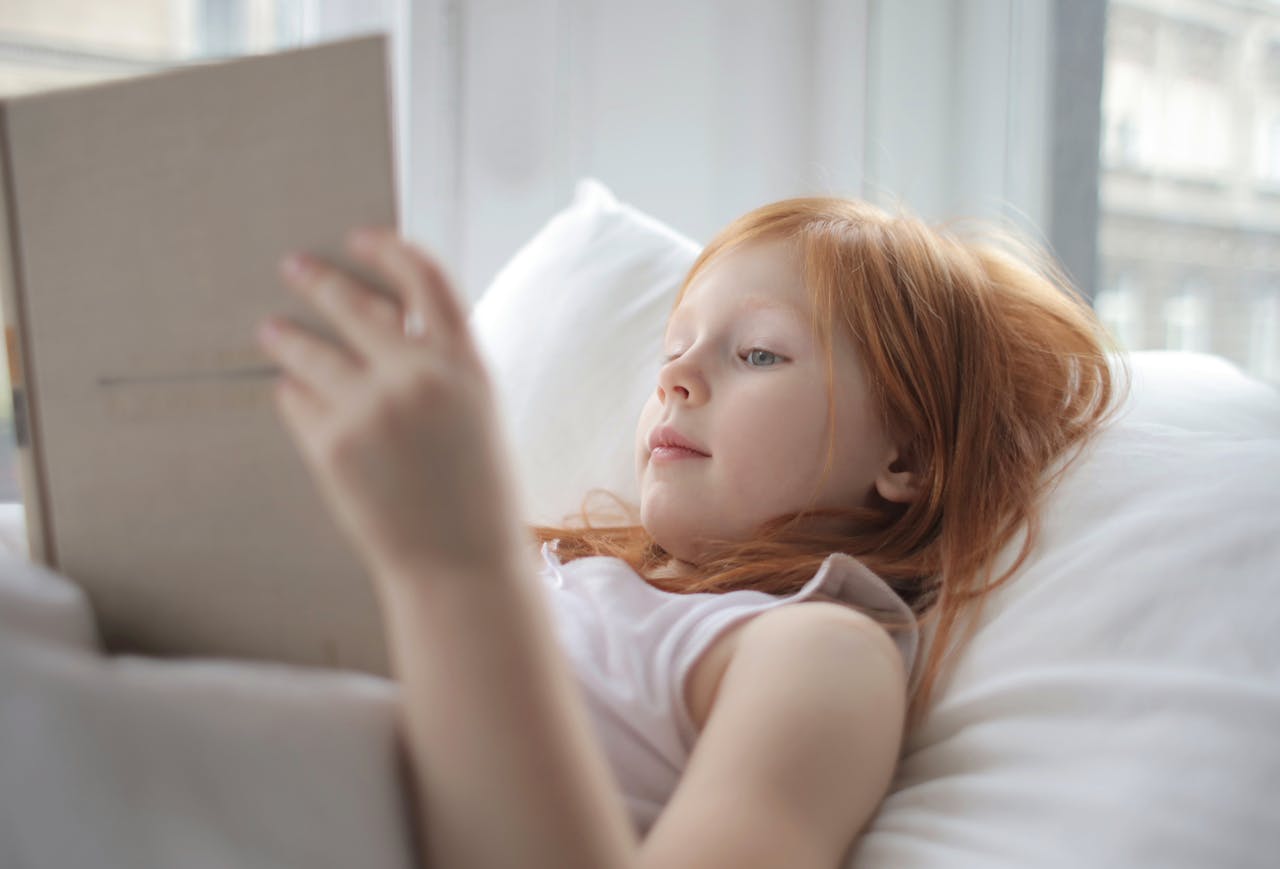7 mindfulness activities kids will love
In a Nutshell
Mindfulness can support children’s emotional regulation, focus, sleep, and overall wellbeing when introduced gently and consistently.
As with any healthy habits, mindfulness activities for kids are most effective when the adults in their life model calm and mindful behaviour themselves.
While mindfulness is a valuable skill, it’s not a replacement for professional support. Therapy can offer deeper guidance when a child is struggling with anxiety, trauma, or ongoing behavioural challenges.
More and more parents and educators are recognising the importance of teaching children to manage stress, regulate emotions and focus better at school and at home. Mindfulness has emerged as one promising approach, not as a quick fix, but as a life skill that helps children pay attention to what’s happening in their minds and bodies with calm curiosity.
For children, mindfulness doesn't have to mean sitting still with eyes closed. It can be a playful moment of noticing a sound, savouring a snack or feeling the breath in the belly.
When done well, mindfulness builds a foundation of emotional awareness, self-regulation and resilience. This article offers seven practical mindfulness activities that are suitable for a range of ages, including tips on when and how to use them. It also looks at why mindfulness matters, how to introduce it gently, and the benefits it can bring to children’s mental health.
Is mindfulness really helpful for children?
Mindfulness can offer meaningful support for children’s development, particularly when it comes to managing emotions, improving concentration and understanding their internal world.
For example, a controlled study involving 9‑ to 10‑year‑old children found that a six‑week school mindfulness programme delivered by class teachers led to measurable improvements in life satisfaction, positive outlook, and emotion regulation, with these benefits persisting at three‑month follow‑up.
A recent review of studies on mindfulness‑based interventions in children aged 6 to 12 also showed consistent gains in emotional regulation, attention, and behavioural self‑control.
Mindfulness may also positively influence sleep. In a longitudinal study using objective sleep measures, children who participated in a school health and mindfulness curriculum increased their total nightly sleep by an average of 74 minutes, along with about 24 extra minutes in REM sleep, compared with peers in a control group.
That said, mindfulness isn’t a universal remedy. For children who have experienced trauma, high anxiety, or who are neurodivergent, some standard practices may feel uncomfortable or even counterproductive.
It’s especially important that mindfulness not be used as a tool to suppress emotions or control behaviour. Children must feel safe and free to engage without pressure.
The most meaningful mindfulness practices are those introduced with respect, sensitivity, and flexibility. Gentle guidance, consistent support, and the chance to pause or opt out make all the difference. Over time, these practices may grow from small moments into lasting emotional skills.
7 child-friendly mindfulness activities to try
These activities are simple to set up, easy to adapt, and can be used in homes, schools or therapeutic settings. The key is to keep them brief, enjoyable and consistent over time.
1. Balloon breathing
Ask the child to place their hands on their belly. As they breathe in through the nose, encourage them to imagine they’re smelling something delicious. As they breathe out slowly through the mouth, they can pretend they’re blowing up a big balloon.
This simple breathing exercise helps children settle their nervous system and can be especially helpful when they're feeling overstimulated or anxious. You can also introduce colours into the visualisation, inviting them to picture calming colours like blue or green as they breathe in and out.
2. Colour focus
Provide a coloured card or object, and ask the child to look at it closely for around 30 seconds. They can notice the shade, any patterns or textures, and how the colour makes them feel. Then invite them to close their eyes and try to picture it in their mind.
Colour psychology suggests that colours can influence mood and energy. Cool tones like blue or green often create a sense of calm, while warm tones like red or orange can bring a sense of vitality. This activity is a quiet way to focus attention without needing stillness or silence.
3. Mindful tasting
Before eating a small snack, ask the child to look at it, smell it, feel its texture, and then slowly take a bite. Encourage them to notice how the flavour changes as they chew.
This is a great way to bring mindfulness into something familiar and enjoyable. It also helps children slow down and tune into their senses, which can support both digestion and enjoyment.
4. Listening walk
Go for a short walk, either outdoors or around the home. Ask the child to stay quiet for a minute and listen carefully to the sounds around them. Afterwards, ask what they heard and how it made them feel.
This exercise combines movement with sensory awareness, making it especially useful for children who find sitting still challenging. It can also be a calming transition between activities.
5. Story-style body scan
Guide the child through a short body scan using story imagery. You might say, “Imagine a soft cloud floating from the top of your head down to your toes.” Pause at each part of the body and invite the child to notice how that area feels.
Body scans help children connect with their physical sensations, which can build self-awareness and calm. This activity is especially effective as part of a bedtime routine.
6. Gratitude check-in
At the end of the day, ask the child to name one thing they’re grateful for and one moment that felt tricky. You can invite them to imagine placing the hard moment in a balloon and letting it float away.
This brief reflection helps children recognise positive experiences and release some of the emotional weight they may be carrying. When used consistently, it can improve emotional regulation and sleep readiness.
7. Feeling through drawing
Give the child some paper and pencils or crayons and ask them to draw how they’re feeling. This can be as abstract or concrete as they like. Afterwards, you can ask whether they’d like to share anything about their drawing.
Creative activities like this provide children with an outlet for expression and a chance to externalise emotions in a safe and familiar way.
Bringing mindfulness into everyday life
Rather than presenting mindfulness as something extra to learn, it helps to build it into existing routines. One or two minutes before a meal, during the transition from school to home, or just before bed can be ideal times.
Children respond well to repetition and rhythm, so having small practices attached to consistent moments of the day is often the easiest way to keep them going.
It’s also important that adults model what they hope to share. If a parent or teacher takes a slow breath during a stressful moment, children notice. These small cues create a culture of regulation and care.
Sleep hygiene is another area where mindfulness fits naturally. Gentle breathing, story-based body scans or a gratitude reflection can be powerful wind-down practices that support better rest and more settled behaviour the next day.
And finally, children thrive when they feel emotionally safe. A warm, flexible parenting style that emphasises connection over control creates the conditions where mindfulness can genuinely support growth.
Final thoughts
Mindfulness, when offered with care and creativity, can become a meaningful part of a child’s daily life. These seven activities can be a starting point for building emotional regulation, improving focus, balancing energy and supporting better sleep. They don’t require perfect conditions or long sessions. Just a bit of attention, a willingness to slow down, and a shared intention to connect.
For parents and educators, introducing mindfulness gently and consistently can help children feel more grounded, more curious and more confident in managing their inner world. Over time, these simple practices can grow into valuable skills for life.
Essential Reading
Free Mental Health Tests
Frequently Asked Questions
Children as young as three can engage with simple mindfulness exercises. Breathing, listening and movement-based activities are ideal for younger ages. Older children may be able to focus for longer or enjoy more reflective practices.
It’s best to start with short, playful experiences; just one or two minutes at first. The goal is consistency, not duration. As children become more familiar with the practices, sessions can be extended as needed.
That’s completely normal. Let them know it’s okay to try again later or choose a different activity. Children are more likely to engage when they feel a sense of autonomy and when the activity feels like play, not a task.
Yes. Mindfulness has been shown to improve sleep quality in children by helping them settle both physically and emotionally before bed. Calming breathwork, body scans and gratitude practices are especially helpful as part of a nightly routine.
Many children with ADHD or anxiety benefit from mindfulness when the activities are tailored to their needs. Movement, sound-based or hands-on practices tend to work better than seated meditations. It’s always helpful to consult a therapist or specialist for more personalised strategies.
Recommended Therapists Available Now
NSW
Psychologist
I am a registered psychologist passionate about helping people navigate life's challenges with greater clarity, self-compassion, and resilience. If you're feeling overwhe...More
NSW
Clinical Psychologist
I'm qualified as a Clinical Psychologist and I work with a deep respect for the transpersonal. At the heart of my work is an invitation to explore our inner nature and th...More
NSW
Psychologist
I'm a registered psychologist with over 10 years of experience supporting children, parents, and adults to navigate life's challenges with greater confidence and ease. My...More








